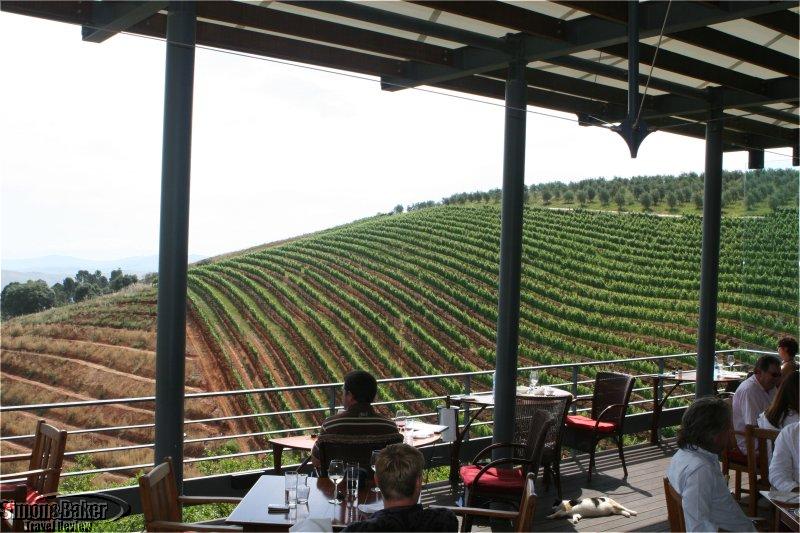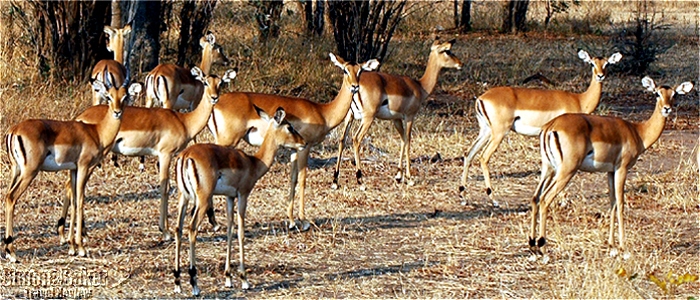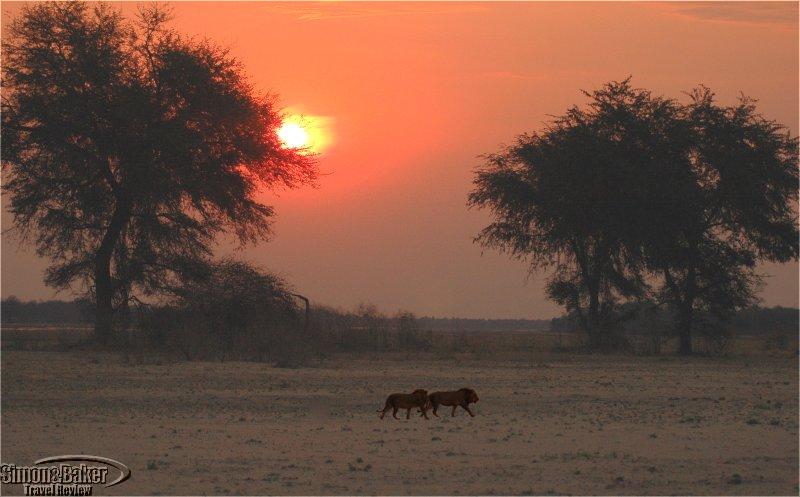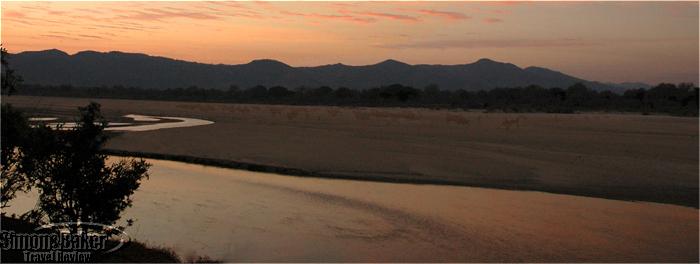
by Editor | Nov 1, 2006 | Africa, Kruger, Sabi Sand, Simon and Baker Travel Review, South Africa
Singita Boulders Lodge, situated within the coveted Sabi Sand Reserve just west of the Kruger National Park, offered understated luxury in a magnificent bush setting. Singita was named for the Shangaan word meaning “The Miracle.” Boulder’s Lodge, a distinctive luxury property with an elegant contemporary style fronting the Sand River for which the reserve is named, stood out for its fabulous adult oriented accommodations (children were welcome in a private section of the property); rustic elegant décor; tasty dishes; and varied activities options such as twice daily Big Five game viewing drives, cellar wine tastings, local village visits, shopping, work outs a the fitness center and spa treatments.

by Editor | Nov 1, 2006 | Africa, Cape Town, Simon and Baker Travel Review, South Africa
We found Tokara 60 kilometers from central Cape Town, high atop a mountain pass known as the Heights of Hell (Helshoogte in Afrikaans) named perhaps because of how tough it was to get an ox-wagon up over the pass in the old days. It was one of those strikingly beautiful, sunny and hot Cape Town days.

by Editor | Oct 1, 2006 | Africa, Simon and Baker Travel Review, South Luangwa, Zambia
It was already well into the evening when I arrived at Kuyenda, a remote bush camp in the South Luangwa National Park. It was my first destination in the park, at the end of a lengthy journey from the United States, and the start of my maiden safari. I immediately felt transported to a timeless Africa I had expected to be long vanished, other than in my imagination! The camp was nestled in a grove of giant trees, facing a grassy meadow that gently sloped down about three hundred feet to the edge of the Manzi River. It consisted of four spacious guest rondavels, traditional South African circular huts built entirely of local wood, reed and thatch. They were clustered around a thatch-roofed, open-wall dining and lounge area. The entire camp was bathed in the soft glow of oil lanterns, as was the long dinner table invitingly set at the edge of the dry riverbed. The darkness echoed with a rich cacophony of sounds that hinted at abundant wildlife nearby.

by Editor | Oct 1, 2006 | Africa, Simon and Baker Travel Review, South Luangwa, Zambia
Overlooking a tranquil oxbow lagoon, the luxurious Mfuwe Lodge was one of only two permanent, year-round lodges within the 3,500 square miles of pristine wilderness of the South Luangwa National Park. In addition to the large lobby and reception area, the striking open-plan main lodge housed a lounge, bar and dining room under a soaring thatched roof. The space was anchored at both ends by spectacular matching stone fireplaces. A wide boma (timber deck on stone pillars) overlooked the lagoon, as did the swimming pool. Both were ideal spots to enjoy the constant parade of game that visited the lagoon.

by Editor | Oct 1, 2006 | Africa, Simon and Baker Travel Review, South Luangwa, Zambia
The South Luangwa National Park is a 3,500 square mile stretch of pristine wilderness hidden away in the north-eastern corner of Zambia. The eastern border of the park follows the Luangwa River as it makes its convoluted way toward the Zambezi, leaving behind a patchwork of oxbow lakes and lagoons. According to experts, this remote valley, with its ruggedly varied landscape of savanna and forest, has one of the highest concentrations of game in Africa. It is host to approximately 60 animal and 400 bird species, including most of the Big Five.

by Editor | Oct 1, 2006 | Africa, Simon and Baker Travel Review, South Luangwa, Zambia
Chamilandu was the most intimate of all the bush camps I visited inside the South Luangwa National Park. It consisted of three guest chalets perched on eight-foot high platforms. Built in the local style with a contemporary flair, each chalet was composed of three walls sheltered by a peaked thatch roof. The fourth side of each rectangular structure was fully opened to a private deck that offered a startling 180 degree view of the Luangwa River, against the distant backdrop of the Nchendeni Hills. The guest chalets were only a few steps away from the spacious dining and lounging hut that was a welcoming gathering spot for all common activities.





